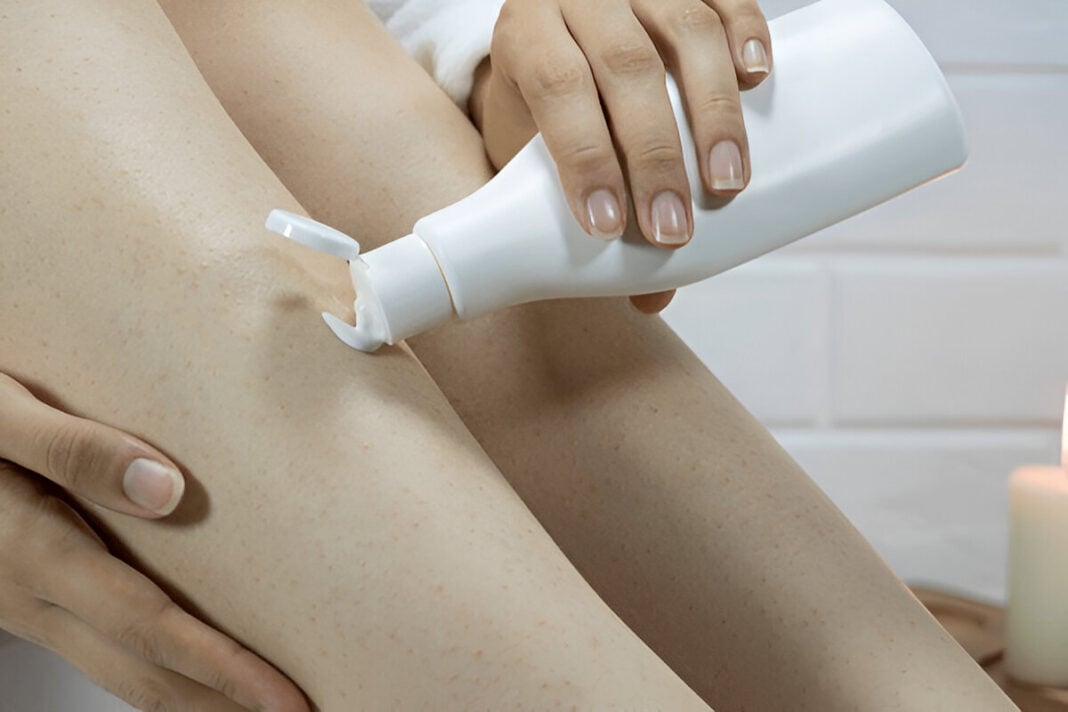The strawberry legs denote a somewhat common yet often misunderstood skin condition that consists of the appearance of darkened pores or dots on the legs, which strongly resemble the surface of a strawberry. The series of dark spots usually occurs due to clogged pores, ingrown hairs, or enlarged hair follicles, and they may even contribute to a rough or bumpy skin texture. While considered benign, this condition may be a truly matter of concern for millions around the world, for cosmetic reasons. Luckily, there exist several treatment measures that may include medical treatment, cosmetic treatments, and home-based remedies that can all help to lessen or to even completely remove strawberry legs. This article discusses strawberry legs-strawberry legs causes, risk factors, and treatment options.
Causes of Strawberry Legs
The formation of strawberry legs could happen due to various reasons like –
- Comedones: The sebaceous glands secrete oil for moisturization of the skin, and if there is an accumulation of sebum, dirt, and dead skin cells in the pores, they become clogged pores; resulting in darkened skin spot (Bergfeld, 2018).
- Keratosis Pilaris: It is a skin problem caused due to accumulation of excess keratin, which plugs hair follicle leading to rough bumps in skin. It is commonly seen on the upper arms and thighs but may also appear on legs (Goldberg & Gold, 2019).
- Techniques of shaving and Hair removal: Wrong shaving techniques, such as using a dull razor or simply failing to wet the skin before shaving, give rise to irritation, burns from razor blades, and ingrown hair. These contribute to the healthy dark look of some pores (Gianfaldoni et al., 2018).
- Folliculitis: It is a disorder where there occurs an inflammation of a hair follicle due to bacterial or fungal infection. Folliculitis can result in redness, itching, and dark pore manifestations on legs (Rogers et al., 2021).
- Dry Skin: Dryness in the skin can lead to more irritation and clogging and, hence, worsen the appearance of strawberry legs (Bergfeld, 2018).
Risk Factors for Developing Strawberry Legs
The following are the most possible causes of strawberry legs:
- Frequent shaving:Often shave without taking careful precautions then it would irritate the skin and clog pores.
- Thick and Curly Hair:Thick and curly hair will have a tendency to make several ingrown hair problems, causing a few darkened pores to develop.
- Genetics:Genetics predispose some people to some form of keratosis pilaris or excess oil secretion and therefore predispose them to strawberry legs (Goldberg & Gold, 2019).
- Poor skincare routine:No exfoliation and moisturizing can lead to increased dead skin buildup, which further helps form clogging pores.
Treatment Options for Strawberry Legs
Treatment for strawberry legs comprises lifestyle advancements, skin-care routines, and medical treatments. Some of the effective means of treatment include:
- Exfoliation:
Proper exfoliation will remove dead skin cells that clog the pores, thus promoting smoother skin.
Physical Exfoliation: Application of body scrubs, dry brushing, or exfoliating gloves helps remove dead skin cells.
Chemical Exfoliation: Alpha hydroxy acids (AHAs) and beta hydroxy acids (BHAs), such as glycolic and salicylic acid, help unclog pores and prevent ingrown hairs (Gianfaldoni et al., 2018).
- Moisturizers:
Hydration is essential to avoid dry skin and irritation. The use of formulations such as hyaluronic acid, shea butter, or ceramides will help keep the skin hydrated (Bergfeld, 2018).
- Proper Shaving Techniques:
Shaving with the direction of hair growth minimizes irritation.
An efficient and sharp razor, partnered with a moisturizing shaving cream, goes a long way in preventing razor burns.
For those prone to strawberry legs, changing hair removal methods such as waxing or laser hair removal might be helpful (Rogers et al., 2021).
- Topical Treatments:
Retinoids: Topical retinoid or prescription retinoid agents promote cell turnover and prevent clogged pores (Goldberg & Gold, 2019).
Benzoyl Peroxide: Benzoyl peroxide, which is the most commonly used topical treatment for acne, reduces activity of acne bacteria and inflammation.
Tea tree Oil: Tea tree oil is effective in preventing folliculitis and ingrown hairs due to its antibacterial and anti-inflammatory action (Gianfaldoni et al., 2018).
- Laser Hair Removal:
The laser works on the hair follicles preventing their growth and future ingrown hairs.
This would be a permanent solution for people who struggle with strawberry legs due to shaving (Rogers et al. 2021).
- Medical Treatments:
For serious cases of folliculitis or keratosis pilaris, top steroid creams or topical preparations can be prescribed.
Professional chemical peels are the only treatments that are able to really improve skin texture and reduce pore clogging (Goldberg & Gold, 2019).
Prevention Strategies
To prevent strawberry legs, one should keep an adequate regimen of skin care while employing the correct methods for hair removal. Some of the more effective preventive measures include:
- Using Gentle Cleansers: Harsh soaps remove essential oils from the skin and cause dryness and irritation.
- Applying Sunscreen: Sun exposure intensifies hyperpigmentation and darkens the pores; hence, sunscreen is a must.
- Wearing Loose Clothing: Tight clothing causes friction and results in folliculitis and irritation.
- Staying Hydrated: Drinking ample amounts of water and applying moisturizers keeps skin well moisturized to prevent dryness and the clogging of pores (Bergfeld, 2018).
Strawberry legs are a common cosmetic problem caused by clogged pores, ingrown hair, and skin disorders like keratosis pilaris and folliculitis. Strawberry legs do not usually create any serious problems, but they can steal self-confidence. Exfoliation, proper shaving techniques, topical treatments, and a variety of medical interventions can treat and prevent strawberry legs. When one understands the underlying causes and follows a proper skincare regime, smoother, blemish-free legs can be accomplished.
References
- Bergfeld, W. F. (2018). Understanding skin conditions: Causes and treatments of common dermatological concerns. Journal of Dermatology Research, 35(2), 112-121. https://doi.org/10.1016/j.jdr.2018.112121
- Gianfaldoni, S., Tchernev, G., Wollina, U., Lotti, J., Satolli, F., & Lotti, T. (2018). An overview on acne and related disorders: Pathophysiology, treatment, and dermatological insights. Open Access Macedonian Journal of Medical Sciences, 6(1), 77-86. https://doi.org/10.3889/oamjms.2018.077
- Goldberg, D. J., & Gold, M. H. (2019). Laser and light treatments for hair removal and skin disorders. Clinics in Dermatology, 37(3), 234-245. https://doi.org/10.1016/j.clinderm.2019.02.003
- Rogers, A. G., Hartman, R. I., & Bolognia, J. L. (2021). Hair disorders and treatment approaches. Journal of the American Academy of Dermatology, 85(1), 99-117. https://doi.org/10.1016/j.jaad.2021.03.010










